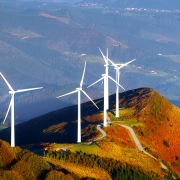Just when it seemed like nothing could make daily life in the United States worse, a giant snowstorm swept across the United States in February. What made it so unusual was that frigid polar air plunged south and spread across Texas, reaching Dallas and Houston, causing record low temperatures, power outages and water shortages for millions of people, and at least 69 deaths.
The great irony is that this devastating cold event occurred while President Biden is embarking on “Green New Deal” policies to reduce global warming (carefully called “climate change” these days). But the irony was quickly dismissed. The New York Times explained:
“The notion that the global phenomenon of a hotter planet could be sending a shocking cold wave into the southern United States might seem nonsensical. And every cold snap can be counted on to elicit quips and stunts from those who deny the science of climate change. But the weather patterns that send freezing air from the polar vortex plunging all the way to the Gulf Coast could, like other forms of extreme weather, be linked to global warming.”
Reporters found a few experts willing to speculate that “climate change” may have contributed to this event, but, in fact, experts have not been predicting more cold as a result of greater carbon dioxide. Just the opposite. The Intergovernmental Panel on Climate Change, usually cited as authoritative, wrote in 2018, “It is virtually certain that there will be more hot and fewer cold extremes as global temperature increases.” (IPCC, p. 1065).
I would like to offer a suggestion. Rather than serve as the cause of more dissension and debate, could this strange concatenation of events (that is, actual cold at a time of fears of warming) be a reality check for politicians? Could it tell them that instead of blindly subsidizing untested forms of energy such as wind turbines (which failed egregiously in Texas), their job is to prepare for actual disasters?
The world is always going to have extreme events. It’s time to deal with the known before the unknown. Clearly, much needs to be done to accomplish that.
To begin with, political bodies can respond accurately to past trends. While the Texas storm was the worst in years, it was probably not the “100-year-catastrophe” that engineers often plan for. Texas has experienced devastating cold and power outages before—specifically, in 1989 and 2011.
After both of those events, federal authorities recommended steps for Texas to take to prepare for winter cold. But the Electric Reliability Council of Texas, which oversees power availability, doesn’t seem to have responded. Rather than fully winterizing the grid, Texas power companies focused on closing down coal plants and building up wind and solar power. Over the past five years, says Bill Peacock of MasterResources.org, wind power in Texas increased by 113 percent; solar power, by 2,000 percent; while power from coal declined by 30 percent.
The presence of predictable but unplanned-for events like winter storms in the southern U.S. adds credence to research by Indur Goklany, who has spent more than 30 years studying the likely impact of global warming. Goklany points out that many of the problems that climate change is expected to cause are already problems.
In a 2011 article about developing countries, Goklany wrote that global warming “is projected to exacerbate the problems of poverty that many of [the poorer countries] face currently, problems such as malaria and other vector‐borne diseases, hunger, water shortages, and vulnerability to extreme weather events and sea level rise.”
But these problems are severe now and will be only partly worsened by increasing carbon dioxide emissions. He gives as an example IPCC projections indicating that global warming will contribute only 13 percent to the number of deaths caused by “hunger, malaria and extreme events”— and that will be in the year 2085!
In other words, factors ranging from poor distribution of food to flimsiness of housing will have much more impact on people’s health and safety than rising global temperatures. Cracking down on carbon dioxide emissions today without addressing the other causes would be a pitiful misuse of resources, especially since it would reduce the economic growth necessary to solve the problems.
Yet that is where we are going.
So, I am hoping: Can the Texas experience lead this nation to a better recognition of reality? Can it help politicians and administrators give priority to the concrete problems of today rather than the vague and speculative problems of the future?








